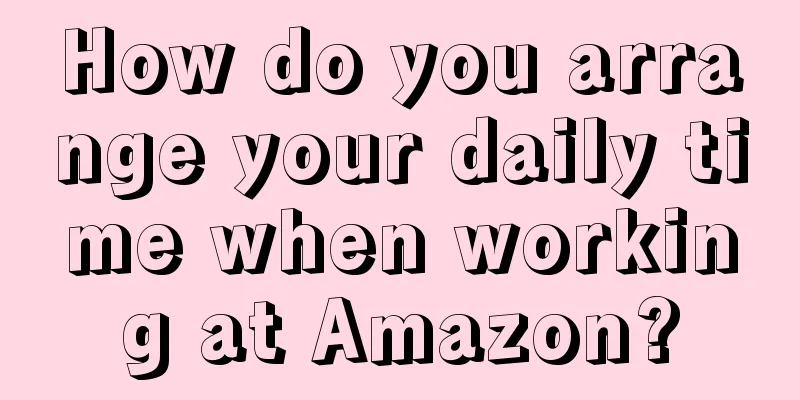Amazon is cracking down on bulk review hoarding and abuse of variants!

|
Recently, Amazon US launched a campaign to severely crack down on users who violated the Vine program and banned stores! This news caught many sellers off guard and shocked them. Many sellers suddenly received news that their stores were closed without any prior notice, and the reason for the closure was: abuse of the Vine review system and repeated creation of product variants. The seller conducted a store inspection, and the results showed that he was involved in serious misconduct: namely, creating a large number of duplicate ASINs with the intention of improperly utilizing and maximizing the free review resources of the Vine program. The core of this store closure incident lies in the sellers’ abuse of the Vine program, manipulation of variant settings, and duplicate creation of ASINs. These behaviors directly touched the two strict boundaries set by Amazon: Triggering of Vine's hidden rules: Although Amazon provides each parent ASIN with the opportunity to get 2 Vine reviews for free, there is an undisclosed rule that prohibits sellers from reusing this free quota by splitting variants, merging variants, or other means. In this incident, the seller clearly violated this hidden clause. Upgrades to variant abuse detection technology: Amazon's variant abuse detection algorithm has been significantly enhanced, and its review traceability system can deeply track and identify those who abuse Vine reviews by merging previous ASINs. At the same time, variant fingerprint recognition technology has become more advanced, and can accurately detect the existence of cloned ASINs through the comparison of information such as titles and pictures, thereby effectively combating variant abuse. Simply put, this store closure storm was the result of three violations: Vine abuse + variant operation abuse + ASIN duplicate creation , which touched Amazon's red line.
1. Data segmentation and adjustment: If other sellers are found to have similar non-compliant operations, immediate measures should be taken to disassociate all variants involving Vine reviews to avoid potential risks. 2. Comply with regulations when participating in the Vine program: If you need to obtain reviews, you should consider using compliant methods, such as participating in the Vine program across sites, which is currently allowed by Amazon. 3. Strictly control variant management: When creating and managing variants, ensure that the differences between the sub-products under the same parent are moderate, and limit the number of adjustments to the variant structure per month, which is recommended to be no more than 2 times. Given that Amazon often conducts post-reviews, sellers need to plan ahead and actively avoid possible risks. Finally, Amazon has intensified its supervision, but Ant still says: As sellers, we must plan ahead to avoid damage to our stores due to illegal operations. To achieve long-term and stable profits, following the principle of compliant operations is the key! |
<<: How many of Amazon’s cross-site “black technologies” do you know?
>>: Great discovery! Amazon buyer show video display has been greatly revamped!
Recommend
What is Ticket Monster (TMon)? Ticket Monster (TMon) Review
Ticket Monster (TMon for short) is the largest gro...
Sellers beware! Shopify will remove products that do not comply with the new policy!
It is learned that according to foreign media repo...
What is the Qianfan Project? Qianfan Project Review
At the "Full Aggregation Brand Conference&quo...
The tax problem on the UK site exploded, and sellers' prices dropped instead of rising?
Since January 1, the UK has fully withdrawn from t...
Cross-border e-commerce product selection: Top 10 best-selling products in summer 2019
The heat wave of the sun is coming, and people ar...
What is Stadium Goods? Stadium Goods Review
Stadium Goods is an American trendy brand consignm...
What is a zombie link list? What is it used for?
What are Amazon Zombie Products? There are a large...
What is OzBargain? OzBargain Review
OzBargain is an Australian shopping community that...
Pinterest acquires AI shopping platform The Yes! Moving towards a social e-commerce platform
<span data-shimo-docs="[[20,"获悉,据外媒报道,近日美国...
Four common targeted advertising methods on Amazon
These four advertising methods are targeted accord...
Halloween selection in the US! Etsy reveals search trends for holiday decorations
It is learned that according to foreign media repo...
What is a betting agreement? Review of betting agreements
A bet-on agreement (VAM Agreement) is a private eq...
What is Linghang Freight Forwarding? Linghang Freight Forwarding Review
Linghang Freight Forwarding (Shenzhen Linghangda I...
What are you trying to do by following the low price? Be careful not to lose all your money!
Primeday will officially open next week. This yea...
What is Joybird? Joybird Review
Joybird is an online furniture brand founded in 20...









